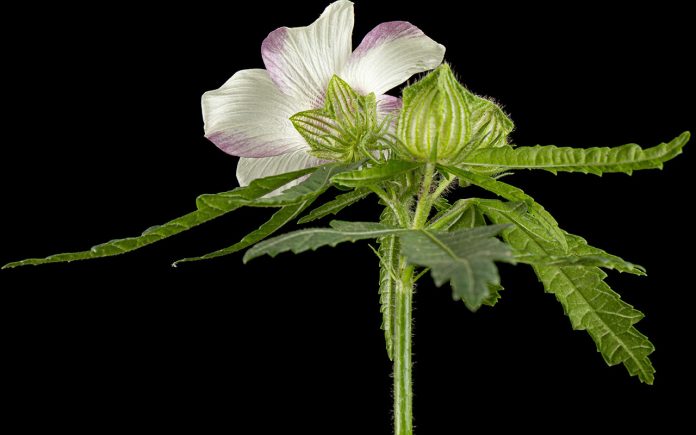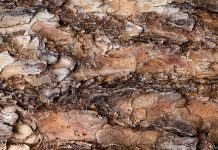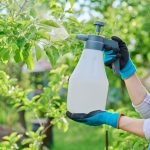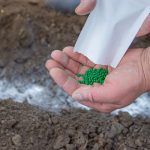Geraniums (Geranium) are one of the most prized flowers in the world. Their striking appearance, capable of brightening up any balcony or garden, and the pleasant aroma that some of their species emit, make them one of the undisputed queens of spring.
If you want to learn how to keep your geraniums safe from pests and diseases that can affect them, keep reading us in this GreenEcology article where we explain how to treat geranium pests and diseases.
You may also be interested in: Eliminating Cottony Cochineal: Treatment and Home Remedies
Geranium pests
Among all the pests that plants are susceptible to suffer, in geranium we are going to highlight the following that we will explain.
Geranium butterfly
The geranium butterfly, also called the geranium borer, is one of the most harmful pests suffered by the geranium, particularly in Spain in the area bordering the Mediterranean Sea. This pest needs maximum attention and control because it can spread easily from one plant to another, thus causing the death of several specimens drastically and in a very short time.
Luckily, it’s pretty easy to identify. You should only observe if the stems of your geranium are pierced. If so, the caterpillar is most likely already inside. This causes internal damage by eating the plant from the inside, weakening its leaves and flowers.
Aphids
Aphids measure about 3 millimeters and are placed in all tender areas of the plant. Its symptoms are coiled and sticky leaves due to the honeydew secreted by these small and tiny insects. In addition, this honeydew is the ideal breeding ground for the appearance of black or the increase in transmitting viruses between different nearby individuals.
Do not hesitate to consult the following article with Home remedies to eliminate aphids on plants to have more information on the subject.
Red spider mite
This pest affects geraniums during the rise in temperature in the spring and summer seasons. They are about 0.5 millimetres in size, reddish in colour and are located on the underside of the leaves. It is not possible to distinguish them with the naked eye, so for them you will need to use a magnifying glass.
However, the symptoms caused by this pest in geraniums are very recognizable. From the silver color that begins to appear on the leaves, to the possibility of seeing small spider webs in case of a severe attack.
Find out how to get rid of the geranium spider mite in the following GreenEcology post that we recommend.
Whitefly
At no more than 3 millimeters in size, the whitefly is one of the pests that prefer high temperatures and excess humidity to reproduce. Luckily, it is very easy to identify since it is only necessary to shake the plant slightly to see how a cloud of insects is created around it. It feeds on sap so in a short time it is capable of severely weakening. Generally, it deposits its eggs and larvae on the undersides of leaves.
You may also be interested in this other article on whitefly: how to eliminate it.
Mealybugs
Brown in color and looking quite similar to a wart, they appear on the stems and leaves of the geranium. Inside are the eggs and larvae of the mealybug which, once in their adult phase, have a characteristic silver colour. They attach themselves to the stem or leaves to feed on the plant and, in turn, excrete honeydew which, as in the case of aphids, can also end up producing the appearance of fungi.
Discover How to get rid of cottony cochineal: treatment and home remedies in this other article from EcologíaVerde that we recommend.
Caterpillars
There are several species, in addition to the geranium butterfly caterpillar, capable of affecting these plants. The best way to fight them is to remove them by hand and ensure that the undersides of the leaves are free of eggs.
Do not hesitate to consult this post with Home remedies to eliminate caterpillars from plants, here.
Green mosquito
These tiny sucking insects stick their beaks into the leaves of the geranium to absorb the sap. The clearest symptoms are the loss of color in the leaves or the appearance of reddish tones on the leaf before its fall.
Nematodes
The nematodes are introduced into the roots in order to feed on the plant. For this reason it is very difficult to realize that the plant is being attacked by them. However, some of its symptoms are easy to recognize, such as the loss of color of the leaves or yellowish tones in them before they end up withering.
If you want to know more about What are nematodes: characteristics, classification and examples, we recommend that you read this article from EcologíaVerde.
Geranium diseases
Once we have seen what the pests of the geranium are, we are going to detail the diseases that this plant can suffer.
Rust
Rust is one of the most common diseases in geranium. It is distinguished by being dark pustules that become orange and are located on the underside of the leaves, causing them to wither and dry out.
Find out how to fight rust, here.
Botrytis
This disease mainly affects the leaves and flowers, forming a layer of dark gray mold that ends up causing them to rot quickly.
Powdery mildew
This fungus is easily identified when a whitish powder appears on the leaf bundle that over time yellows the leaves until they dry completely.
Do not hesitate to consult the following article on How to combat powdery mildew with home remedies in EcologíaVerde.
Alternariosis
Brown spots that appear on the most adult parts of the plant, specifically on its leaves and that cause general weakness.
Anthracnose
Small dark brown spots that appear on the leaves, shoots and buds of the geranium and that end up expanding until the affected area withers.
If you want to know more about Anthracnose: what it is and treatment, you can do so in this post that we recommend.
Foot Sickness
This fungus also produces spots similar to those of anthracnose, so although it can be easily confused, it can also be treated using the right fungicide.
Bacteria
These bacteria appear in the form of necrotic spots on the leaves until they dry out and fall off. There is no cure for them, so it is necessary to isolate the plant from the rest to avoid contagion.
Mosaic Virus
Geraniums can also be infected by plant viruses such as mosaic virus. Its most representative symptoms are the appearance of variegated and yellowish spots on the leaves and malformations in its flowers.
How to Prevent Geranium Pests and Diseases
Preventive treatments, as is usual in this type of case, are usually always more advisable in the long run. As far as pests are concerned, it is advisable to plant aromatic plants in the garden or accesses to the home such as doors and windows that help keep away undesirable insects, such as lavender, basil, mint, rosemary or citronella.
As for fungi and diseases, it is best to:
- Keep the garden and plant aerated.
- Always remove parts of plants in poor condition immediately.
- Do not let leaves and other fallen plant matter accumulate.
When the temperature is mild and there is rain, it is advisable to apply natural fungicides such as the one made from milk as a preventive measure, as they are the ideal conditions for the development of fungi.
We leave you this article on geranium care and you are curious about plant care, do not hesitate to take a look at the following video on natural insecticides from EcologíaVerde that will help you keep them in perfect condition.
If you want to read similar articles to Geranium pests and diseases, we recommend that you visit our Garden Care category.










